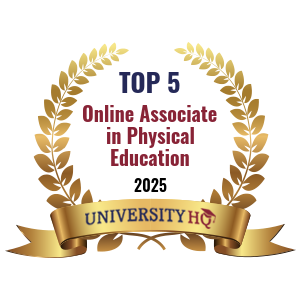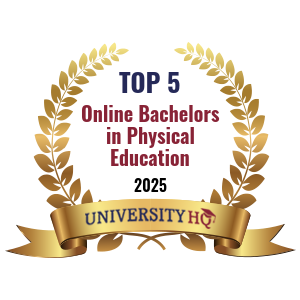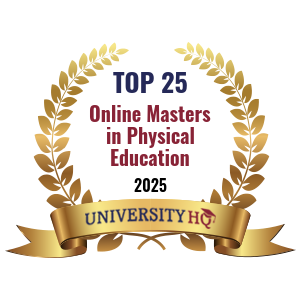What Does a Career in Health and Physical Education Entail?
While you might imagine a career in physical education-health (PE) to be all about exercising with kids, there is a lot more involved. Teachers in all states must hold a four-year bachelor's education degree and often must hold or be working on their master's education degree or at least earning continuing education credits in order to maintain their license, and those who teach physical education, health and fitness or physical fitness, and health promotion are no different. A health-physical education degree combines academics in teaching, leadership, health, fitness, athletics, a variety of recreation activities, the science of motion and the positive impact it has on the body are quite rigorous as they help current students develop a thorough understanding of all course content and prepare graduates to work as school faculty or staff as a health-physical education teacher after the successful completion of their college education.
Because you'll be working with children as well as interacting with parents and other instructors, you'll need excellent interpersonal skills. In addition, you'll need to be adept at scheduling, report writing, and record-keeping in order to meet the standard requirements of assessing and grading possibly hundreds of children in your health-physical education or health and fitness classes, whether they are at the elementary, middle school, or high school level.

Components of a Successful Career in Health and Physical Education
To enter the field of physical education-health, you should first check the requirements for the state in which you plan to teach so that you can be sure your college program for physical education majors will meet the state standards for testing and provide you opportunities for a position as a physical education teacher. This will help you stay on course and be prepared to complete student teaching at local schools with licensed faculty members, test, and pursue careers as a physical educator as soon as possible. You can request this information from your state board of education or look it up on their website.
Although a four-year education and degree is required for certification, you can likely enter the field as a teaching assistant with an associate degree or after completing the second year of your physical education-health and/or educator preparation bachelor's program. This should be a vital component of your education plan as most states have experience requirements, specifically student teaching, as part of the certification process.
Many teachers hold a master's degree, and some states require you to complete your graduate degree within a specific time frame of becoming certified and successful completion of your general teacher education. This means your long-term plan should include earning your master's degree in physical education-health to ensure you have both job security and flexibility.
Although teaching is a full-time job in itself, many of those who work as a physical education teacher also coach or referee various sports in addition to their teaching duties. These are paid positions and are equivalent to a part-time job in addition to your teaching position.
While teaching is the long-term goal of this degree, you will have other options for employment throughout your life once you graduate. Health and fitness trainers and instructors are employed by many corporations as well as in the private sector.
Featured Online Programs
How to Become a Health and Physical Education Techer
Typical Online Health and Physical Education Degree Requirements
 An online associate physical education degree will require 60 credit hours, approximately half of which are the core requirements in English and mathematics. Your early science courses should reflect your major and be in biology and the kinetic science areas.
An online associate physical education degree will require 60 credit hours, approximately half of which are the core requirements in English and mathematics. Your early science courses should reflect your major and be in biology and the kinetic science areas.
An online bachelor of science degree in health or physical education will require an additional 60 hours for a total of 120 hours in four years. You will take courses specific to the skills needed to teach as well as intensive coursework in the health and science groups.
An online master's degree usually requires an additional 40 college credits and will reflect your chosen special concentration, whether that's health and physical education degree or special education with a health focus. If you choose to continue your education and earn a doctorate you can expect it to take three to four years with a full-time class schedule.
Typical Health and Physical Education Certifications Needed
Each state sets its own standards for teacher education and certification, so it's important you are familiar with the requirements in your own state and don't skip any. For example, Ohio requires 100 hours experience and a 12-week internship as well as specific coursework in addition to a bachelor's degree before you can sit for the certification exam. North Carolina requires you to have completed a state approved teacher education program before you can test for an initial certification.
Find Your Online Physical Education Program
Academic Standards for a Health and Physical Education Degree
Many states require you to maintain a minimum grade point average (GPA) of 3.0 in order to be eligible to sit for the teaching certification exam. This is the same standard required by most master's degree programs, so you should plan to keep your grades high throughout your education.
Exam/Experience Needed for a Health and Physical Education Degree
 As noted before, you must be licensed by the state you teach in, and part of the qualifying process usually includes experience in the classroom. In addition, you'll be required to periodically renew your certification and take continuing education courses throughout your career.
As noted before, you must be licensed by the state you teach in, and part of the qualifying process usually includes experience in the classroom. In addition, you'll be required to periodically renew your certification and take continuing education courses throughout your career.
Associate Degree in Physical Education Online
An online associate degree is an excellent beginning for your career as a health and physical education teacher. Although you will not qualify for the state teaching exam you will be eligible to work as an assistant teacher and can begin to accrue the experience hours required for certification. Your associate's degree is the equivalent of the first two years of a bachelor's program and will cover your core classes as well as basic degree-specific courses such as:
Example Courses:
- Teaching Techniques
- CPR Training Health and Nutrition
- Individual and Group Fitness Instruction
- Safety Practices
Bachelor’s Degree in Physical Education Online
Once you enter your bachelor's degree program, you'll take courses centered on the three main subjects concerning your degree: teaching, health, and science. Your teaching classes will deal with the specific skills needed to lead a classroom and the health courses will center on nutrition, safety, and anatomy while your science courses will focus on the kinetics and physics of the human body. Here are some sample class titles:
Example Courses:
- Techniques of Classroom Management
- Curriculum Design
- Teaching Fitness in Physical Education
- Introduction to Kinesiology and Health
- Motor Development and Learning
- Personal Health
- Introduction to Public Health
- Health Behaviors
Master’s Degree in Physical Education Online
By the time you enter a master's degree program you should know where your specific interest lies, and your concentration will reflect that. The courses in your master's program will be centered on your area of specialization. Some courses you may take include:
Example Courses:
- Educational Psychology
- Individuals with Exceptionalities
- Physiology of Exercise
- History and Philosophy of Physical Education
- Care and Prevention of Athletic Injuries
- Concepts of Motor Skills
While concentrations will vary by school here are a few that you might find to choose from:
- Coaching Studies
- Fitness and Wellness Professional Studies
- Exercise Science
Cost Range for Online Associates, Bachelors & Masters in Physical Education
There are many variables that will determine the cost of your degree. Whether you qualify for in-state tuition, if the school is public or privately funded, and whether you qualify for federal aid or scholarships can all affect your cost of tuition. The following chart shows the range of cost for each degree; keep in mind these figures are for tuition only and don't include extra cost such as lab fees and books.
Cost Range for Each
| Degree | Private School | Public School |
|---|---|---|
| Associate | $29,174/year | $7,140/year |
| Bachelor | $58,348/year | $14,280/year |
| Master | $120,000 | $30,000 |
Top 5 Best Online Associate in Physical Education Programs
Seminole State College of Florida
Score: 82.91
- Undergraduate Tuition
- In-State: $3,227
- Out-of-State:$11,447
- Net Price: $2,889
- Acceptance Rate: 100%
- Retention Rate: 66%
- Graduation Rate: 42%
- Total Enrollment: 14,104
- Undergrad Students: 14,104
- Graduate Students: N/A
- Grads Salary: $38,100
- Student-to-faculty: 26:1
Georgia State University
Score: 78.04
- Undergraduate Tuition
- In-State: $8,478
- Out-of-State:$23,709
- Net Price: $16,390
- Acceptance Rate: 62%
- Retention Rate: 78%
- Graduation Rate: 54%
- Total Enrollment: 34,974
- Undergrad Students: 27,588
- Graduate Students: 7,386
- Grads Salary: $35,800
- Student-to-faculty: 25:1
Copiah-Lincoln Community College
Score: 74.53
- Undergraduate Tuition
- In-State: $4,000
- Out-of-State:$5,000
- Net Price: $5,098
- Acceptance Rate: 100%
- Retention Rate: 73%
- Graduation Rate: 52%
- Total Enrollment: 2,834
- Undergrad Students: 2,834
- Graduate Students: N/A
- Grads Salary: $24,600
- Student-to-faculty: 20:1
Western Oklahoma State College
Score: 73.71
- Undergraduate Tuition
- In-State: $5,446
- Out-of-State:$9,618
- Net Price: $10,016
- Acceptance Rate: 100%
- Retention Rate: 59%
- Graduation Rate: 34%
- Total Enrollment: 1,151
- Undergrad Students: 1,151
- Graduate Students: N/A
- Grads Salary: $36,500
- Student-to-faculty: 15:1
Erie Community College
Score: 68.98
- Undergraduate Tuition
- In-State: $11,300
- Out-of-State:$11,300
- Net Price: $5,740
- Acceptance Rate: 100%
- Retention Rate: 54%
- Graduation Rate: 27%
- Total Enrollment: 7,618
- Undergrad Students: 7,618
- Graduate Students: N/A
- Grads Salary: $31,600
- Student-to-faculty: 16:1
Top 5 Best Online Bachelors in Physical Education Programs
University of Kansas
Score: 80.08
- Undergraduate Tuition
- In-State: $11,700
- Out-of-State:$29,412
- Net Price: $18,322
- Acceptance Rate: 88%
- Retention Rate: 85%
- Graduation Rate: 69%
- Total Enrollment: 28,406
- Undergrad Students: 20,696
- Graduate Students: 7,710
- Grads Salary: $75,000
- Student-to-faculty: 17:1
Eastern New Mexico University
Score: 79.15
- Undergraduate Tuition
- In-State: $6,863
- Out-of-State:$8,843
- Net Price: $6,683
- Acceptance Rate: 55%
- Retention Rate: 62%
- Graduation Rate: 40%
- Total Enrollment: 5,386
- Undergrad Students: 4,072
- Graduate Students: 1,314
- Grads Salary: $70,000
- Student-to-faculty: 17:1
William Carey University
Score: 78.29
- Undergraduate Tuition
- In-State: $14,685
- Out-of-State:$14,685
- Net Price: $17,192
- Acceptance Rate: 58%
- Retention Rate: 80%
- Graduation Rate: 41%
- Total Enrollment: 5,448
- Undergrad Students: 3,113
- Graduate Students: 2,335
- Grads Salary: $76,000
- Student-to-faculty: 13:1
University of Louisiana at Lafayette
Score: 73.34
- Undergraduate Tuition
- In-State: $10,418
- Out-of-State:$24,146
- Net Price: $13,443
- Acceptance Rate: 89%
- Retention Rate: 76%
- Graduation Rate: 52%
- Total Enrollment: 15,345
- Undergrad Students: 13,179
- Graduate Students: 2,166
- Grads Salary: $69,000
- Student-to-faculty: 18:1
Fort Hays State University
Score: 73.27
- Undergraduate Tuition
- In-State: $5,633
- Out-of-State:$16,811
- Net Price: $13,774
- Acceptance Rate: 92%
- Retention Rate: 77%
- Graduation Rate: 48%
- Total Enrollment: 12,843
- Undergrad Students: 10,206
- Graduate Students: 2,637
- Grads Salary: $65,000
- Student-to-faculty: 14:1
Top 25 Best Online Masters in Physical Education Programs
University of South Florida
Score: 85.95
- Graduate Tuition
- In-State: $8,350
- Out-of-State:$19,048
- Net Price: $11,578
- Acceptance Rate: 41%
- Retention Rate: 91%
- Graduation Rate: 75%
- Total Enrollment: 48,572
- Undergrad Students: 37,269
- Graduate Students: 11,303
- Grads Salary: $73,000
- Student-to-faculty: 22:1
Fresno Pacific University
Score: 83.51
- Graduate Tuition
- In-State: $13,140
- Out-of-State:$13,140
- Net Price: $15,668
- Acceptance Rate: 58%
- Retention Rate: 81%
- Graduation Rate: 56%
- Total Enrollment: 2,921
- Undergrad Students: 1,616
- Graduate Students: 1,305
- Grads Salary: $84,000
- Student-to-faculty: 8:1
University of Houston
Score: 79.73
- Graduate Tuition
- In-State: $8,723
- Out-of-State:$18,083
- Net Price: $13,738
- Acceptance Rate: 70%
- Retention Rate: 86%
- Graduation Rate: 65%
- Total Enrollment: 46,676
- Undergrad Students: 37,946
- Graduate Students: 8,730
- Grads Salary: $76,000
- Student-to-faculty: 21:1
University of Mary
Score: 78.24
- Graduate Tuition
- In-State: $10,620
- Out-of-State:$10,620
- Net Price: $19,225
- Acceptance Rate: 78%
- Retention Rate: 83%
- Graduation Rate: 68%
- Total Enrollment: 3,794
- Undergrad Students: 2,650
- Graduate Students: 1,144
- Grads Salary: $75,000
- Student-to-faculty: 10:1
West Virginia University
Score: 77.23
- Graduate Tuition
- In-State: $10,908
- Out-of-State:$28,260
- Net Price: $13,691
- Acceptance Rate: 86%
- Retention Rate: 81%
- Graduation Rate: 61%
- Total Enrollment: 24,200
- Undergrad Students: 18,615
- Graduate Students: 5,585
- Grads Salary: $75,000
- Student-to-faculty: 17:1
University of Wyoming
Score: 76.98
- Graduate Tuition
- In-State: $6,460
- Out-of-State:$19,340
- Net Price: $13,299
- Acceptance Rate: 97%
- Retention Rate: 77%
- Graduation Rate: 60%
- Total Enrollment: 10,913
- Undergrad Students: 8,250
- Graduate Students: 2,663
- Grads Salary: $75,000
- Student-to-faculty: 13:1
University of Arkansas
Score: 76.7
- Graduate Tuition
- In-State: $10,500
- Out-of-State:$28,560
- Net Price: $17,475
- Acceptance Rate: 72%
- Retention Rate: 86%
- Graduation Rate: 70%
- Total Enrollment: 32,140
- Undergrad Students: 27,472
- Graduate Students: 4,668
- Grads Salary: $72,000
- Student-to-faculty: 20:1
Canisius University
Score: 76.25
- Graduate Tuition
- In-State: $15,930
- Out-of-State:$15,930
- Net Price: $19,321
- Acceptance Rate: 82%
- Retention Rate: 80%
- Graduation Rate: 71%
- Total Enrollment: 2,545
- Undergrad Students: 1,798
- Graduate Students: 747
- Grads Salary: $71,000
- Student-to-faculty: 11:1
East Carolina University
Score: 74.82
- Graduate Tuition
- In-State: $4,749
- Out-of-State:$17,898
- Net Price: $14,470
- Acceptance Rate: 90%
- Retention Rate: 82%
- Graduation Rate: 62%
- Total Enrollment: 26,785
- Undergrad Students: 21,328
- Graduate Students: 5,457
- Grads Salary: $71,000
- Student-to-faculty: 17:1
Concordia University-Saint Paul
Score: 74.76
- Graduate Tuition
- In-State: $8,550
- Out-of-State:$8,550
- Net Price: $17,989
- Acceptance Rate: 75%
- Retention Rate: 67%
- Graduation Rate: 59%
- Total Enrollment: 5,854
- Undergrad Students: 3,146
- Graduate Students: 2,708
- Grads Salary: $78,000
- Student-to-faculty: 15:1
University of North Carolina Wilmington
Score: 74.38
- Graduate Tuition
- In-State: $4,979
- Out-of-State:$20,155
- Net Price: $18,606
- Acceptance Rate: 74%
- Retention Rate: 85%
- Graduation Rate: 71%
- Total Enrollment: 17,987
- Undergrad Students: 14,494
- Graduate Students: 3,493
- Grads Salary: $67,000
- Student-to-faculty: 17:1
Northern Kentucky University
Score: 74.36
- Graduate Tuition
- In-State: $10,206
- Out-of-State:$15,660
- Net Price: $8,151
- Acceptance Rate: 96%
- Retention Rate: 78%
- Graduation Rate: 48%
- Total Enrollment: 14,961
- Undergrad Students: 9,927
- Graduate Students: 5,034
- Grads Salary: $72,000
- Student-to-faculty: 18:1
University of South Carolina-Columbia
Score: 74.35
- Graduate Tuition
- In-State: $13,374
- Out-of-State:$29,760
- Net Price: $26,068
- Acceptance Rate: 61%
- Retention Rate: 91%
- Graduation Rate: 78%
- Total Enrollment: 36,579
- Undergrad Students: 28,470
- Graduate Students: 8,109
- Grads Salary: $71,000
- Student-to-faculty: 18:1
Eastern New Mexico University
Score: 74.09
- Graduate Tuition
- In-State: $5,454
- Out-of-State:$7,226
- Net Price: $6,683
- Acceptance Rate: 55%
- Retention Rate: 62%
- Graduation Rate: 40%
- Total Enrollment: 5,386
- Undergrad Students: 4,072
- Graduate Students: 1,314
- Grads Salary: $70,000
- Student-to-faculty: 17:1
University of Northern Iowa
Score: 73.54
- Graduate Tuition
- In-State: $10,030
- Out-of-State:$21,502
- Net Price: $15,931
- Acceptance Rate: 94%
- Retention Rate: 85%
- Graduation Rate: 69%
- Total Enrollment: 9,013
- Undergrad Students: 7,734
- Graduate Students: 1,279
- Grads Salary: $66,000
- Student-to-faculty: 17:1
Tennessee Technological University
Score: 73.53
- Graduate Tuition
- In-State: $10,480
- Out-of-State:$19,420
- Net Price: $15,138
- Acceptance Rate: 83%
- Retention Rate: 77%
- Graduation Rate: 54%
- Total Enrollment: 10,117
- Undergrad Students: 8,838
- Graduate Students: 1,279
- Grads Salary: $74,000
- Student-to-faculty: 16:1
The University of Texas Rio Grande Valley
Score: 73.5
- Graduate Tuition
- In-State: $6,948
- Out-of-State:$14,499
- Net Price: $6,978
- Acceptance Rate: 85%
- Retention Rate: 79%
- Graduation Rate: 49%
- Total Enrollment: 31,931
- Undergrad Students: 27,040
- Graduate Students: 4,891
- Grads Salary: $66,000
- Student-to-faculty: 19:1
Calvin University
Score: 73.29
- Graduate Tuition
- In-State: $10,909
- Out-of-State:$10,909
- Net Price: $26,374
- Acceptance Rate: 71%
- Retention Rate: 88%
- Graduation Rate: 77%
- Total Enrollment: 3,364
- Undergrad Students: 3,053
- Graduate Students: 311
- Grads Salary: $70,000
- Student-to-faculty: 14:1
University of Nebraska at Kearney
Score: 72.84
- Graduate Tuition
- In-State: $6,432
- Out-of-State:$14,136
- Net Price: $16,249
- Acceptance Rate: 86%
- Retention Rate: 77%
- Graduation Rate: 60%
- Total Enrollment: 6,017
- Undergrad Students: 4,224
- Graduate Students: 1,793
- Grads Salary: $69,000
- Student-to-faculty: 13:1
University of Alabama at Birmingham
Score: 72.78
- Graduate Tuition
- In-State: $8,424
- Out-of-State:$20,556
- Net Price: $17,413
- Acceptance Rate: 88%
- Retention Rate: 82%
- Graduation Rate: 63%
- Total Enrollment: 21,160
- Undergrad Students: 12,382
- Graduate Students: 8,778
- Grads Salary: $71,000
- Student-to-faculty: 18:1
Utah State University
Score: 72.74
- Graduate Tuition
- In-State: $6,763
- Out-of-State:$23,176
- Net Price: $15,825
- Acceptance Rate: 94%
- Retention Rate: 74%
- Graduation Rate: 57%
- Total Enrollment: 28,063
- Undergrad Students: 25,048
- Graduate Students: 3,015
- Grads Salary: $76,000
- Student-to-faculty: 19:1
University of the Cumberlands
Score: 72.4
- Graduate Tuition
- In-State: $4,260
- Out-of-State:$4,260
- Net Price: $11,555
- Acceptance Rate: 71%
- Retention Rate: 81%
- Graduation Rate: 46%
- Total Enrollment: 20,327
- Undergrad Students: 6,091
- Graduate Students: 14,236
- Grads Salary: $70,000
- Student-to-faculty: 19:1
Northwest Missouri State University
Score: 71.63
- Graduate Tuition
- In-State: $6,704
- Out-of-State:$6,704
- Net Price: $15,497
- Acceptance Rate: 86%
- Retention Rate: 74%
- Graduation Rate: 58%
- Total Enrollment: 9,664
- Undergrad Students: 5,599
- Graduate Students: 4,065
- Grads Salary: $71,000
- Student-to-faculty: 19:1
SUNY Brockport
Score: 71.61
- Graduate Tuition
- In-State: $11,310
- Out-of-State:$13,570
- Net Price: $15,343
- Acceptance Rate: 71%
- Retention Rate: 73%
- Graduation Rate: 57%
- Total Enrollment: 6,931
- Undergrad Students: 5,429
- Graduate Students: 1,502
- Grads Salary: $67,000
- Student-to-faculty: 16:1
Central Washington University
Score: 71.57
- Graduate Tuition
- In-State: $10,721
- Out-of-State:$25,092
- Net Price: $15,558
- Acceptance Rate: 90%
- Retention Rate: 69%
- Graduation Rate: 50%
- Total Enrollment: 8,796
- Undergrad Students: 8,309
- Graduate Students: 487
- Grads Salary: $77,000
- Student-to-faculty: 17:1
Earning Potential for Health and Physical Education Degree Fields and Occupations
As with many careers, your level of education and experience will have a direct impact on your earning potential as a health and physical education teacher. Once you complete your associate's degree or the first half of your bachelor's degree you may be able to enter the field as an assistant teacher, and when you hold your Bachelor's you can take the state exam to become a certified teacher. The following shows salaries for full-time positions, so if you're considering part-time jobs you can use these salaries to get an income estimate.
Health and Physical Education Fields of Study Median Salaries
-
High School Teacher:
teach health and physical education program or health and fitness at a high school level, usually with a full schedule of classes. -
Sports Coach:
coach one or more sport teams; may be supplemental to teaching or as a full-time career. -
Fitness Coach:
train individuals or teach adult classes, either as a personal business or for a national fitness chain.
Field of Study Average Salary by Degree Level
| Field of Study | Associate Salary | Bachelor's Salary | Master's Salary |
|---|---|---|---|
| High School Teacher | -- | $59,170 | $95,380 |
| Sports Coach | $18,670 | $32,270 | $75,400 |
| Fitness Coach | $19,640 | $39,210 | $74,520 |
Health and Physical Education Salaries by Occupation
Although your salary with a health and physical education degree will generally rise according to your degree level and experience, you are also not confined to teaching in the public-school system or a fitness program. You might choose to concentrate your master's on coaching and make that your full-time profession or decide to teach on a post-secondary level. You can also get your master's in school administration education and move up the hierarchy within the school system. Here's a closer look at the median salaries of teaching positions at different levels as well as other occupations you might pursue with a health and physical education degree:
Find Online Physical Education Schools
-
Teacher's Assistant:
one of the few positions available with an Associate's degree, an assistant teacher position gives you valuable insight and experience you can use to complete your state certification process. -
Elementary Teacher:
Usually rotates to teach different grade levels on different days and times and may focus more on teaching the health aspects such as safety and good hygiene. -
Middle School Teacher:
typically introduces adolescents to team sports, rules and regulations of sports, and personal health subjects such as sex education. -
Post Secondary Teacher:
usually teaches on the college level at two-year schools; most four-year universities prefer those who hold a doctorate. -
School Principal:
oversees all administrative and personnel aspects within an individual school. -
Postsecondary Education Administrator:
oversees part or all of a school district. -
Referee or Umpire:
officiates at sporting events; may work in more than one sport.
Annual Salary by Occupation
| Occupations | Entry Level Salary Range | Mid-Career Salary Range/Average | Late Career Salary Range |
|---|---|---|---|
| Teacher's Assistant | $22,800 | $23,000 | $27,100 |
| Elementary School Teacher | $39,700 | $45,400 | $58,500 |
| Middle School Teacher | $40,300 | $48,100 | $59,100 |
| Associate Professor | $61,000 | $77,500 | $80,500 |
| Elementary School Principal | $67,600 | $81,200 | $92,700 |
| Postsecondary Education Administrators | $45,100 | $58,000 | $65,000 |
Important Questions to Ask (FAQ)
How long does it take to earn a Health and Physical Education bachelor's degree online?
If you're taking a full course load you can expect to graduate in four years, and if you have already earned your associate in health and physical education degree, it will take two years of full-time classes at your college or state university of choice. Keep in mind if you can only take half a class load it will take you twice as long to earn your physical education degree.
How much does an Online Health and Physical Education bachelor’s degree cost?
The cost of your degree will depend on where you live and whether you attend a public or a private school. The U.S. Department of Education reports a Bachelor degree to cost between $22,000 and $50,000. However, if you aren’t able to take a full course load each semester, it will take you longer to earn your degree. The longer you take, the more your degree can cost. Keep in mind that at least some of this cost may be covered by scholarships and grants.
Does the school have the major(s) you’re considering?
Your primary concern should be whether the online degrees offered meet the state requirements for a major in education. If your school of choice doesn't have a specific major for health and physical education look at the curriculum of a different school to see if the required physical education courses are offered at your school of choice. This may give you a major in education and a minor in health and physical education.
How many students graduate “on time,” in four years?
 This is important because it will give you an idea of how much student support is available. If a high percentage of students are graduating in five years instead of four it may indicate the school is more focused on enrollment instead of student success. A quality school will work to help students graduate on time and will use the fact as a recruiting tool for new students.
This is important because it will give you an idea of how much student support is available. If a high percentage of students are graduating in five years instead of four it may indicate the school is more focused on enrollment instead of student success. A quality school will work to help students graduate on time and will use the fact as a recruiting tool for new students.
What kind of accreditation does the online program hold? How is it regarded in the field?
This is a vital point because accreditation is tied to state requirements for certification as well as federal aid and most scholarships and grants. Your school of choice should be regionally accredited, and you should verify this fact before enrolling. You’ll want to look for regional accreditation from one of the 6 regional accreditors within the US that are approved by the US Department of Education. You can find them listed on the DOE website. The other accreditation you want to look for is programmatic accreditation of the education department. This should be provided by the Council for the Accreditation of Educator Preparation (CAEP).
Software, Technology & Skills Needed
Teachers must be adept in basic computer knowledge as well as word processing systems. In addition, you will need to learn software specific to the school systems in your state, such as Blackboard and similar classroom management tools and systems.
Health and Physical Education Scholarships
Scholarships can pay part or all of your tuition expenses, but they take a lot of time, so you should set aside some time each week and apply for any you might qualify for. Make sure to check your school, county, and state for scholarships that are exclusive to your region. Here are some national awards to get you started:
-
Ruth Abernathy Presidential Scholarship
Amount: $1,250
Deadline: October 15Three scholarships of $1,250 are awarded on the undergraduate level each year, includes SHAPE membership and attendance to convention.
-
Barbara A. Cooley Scholarship
Amount: $1,000
Deadline: October 15$1,000 each year to Master degree student as well as one-year subscription to SHAPE.
-
Bill Kane Scholarship
Amount: $1,000
Deadline: November 15Awarded each year to an undergrad student; $1,000 each.
Search Programs Offering Physical Education Majors
-
American Public Health Association
Amount: Varies
Deadline: June 6, June 29Awards scholarships each year to undergraduates in health education fields.
-
Tylenol Future Care Scholarship
Amount: $10,000 (10 Awards), $5,000 (30 Awards)
Deadline: June 30Awarded to 40 students each year, must be enrolled in a health program and have high academic achievement and community involvement.
Professional Organizations
As soon as you begin your health and physical education program you should plan to join one or more organization dedicated to your field. Membership in professional associations will give you mentorship, reading and educational resources, access to seminars and conventions, and other valuable tools to help you with your teacher education degree and career.
- NASPE
- NATA
- SHPE
- NEA
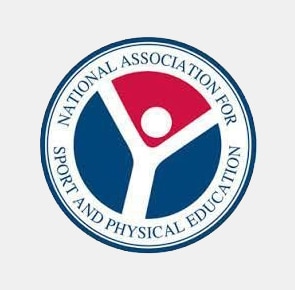
NASPE
National Association for Sport and Physical Education
with over 15,000 members you'll find information on professionalism, physical education, physical activity, and technology issues relating to your profession.
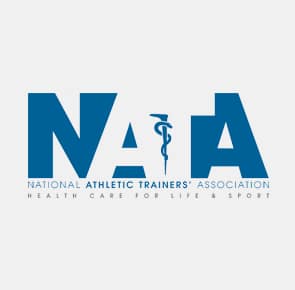
NATA
National Athletic Trainers Association
dedicated to the athletic training profession on the national, district and local levels.

SHPE
Society of Health and Physical Educators
provides resources such as continuing education, webinars, seminars, and podcasts to help your professional development.

NEA
National Education Association
most popular organization for all types of public-school teachers, offers conferences as well as regional meetings and workshops.
Choosing an Accredited College
Your most important step before choosing a school should be to verify the college is fully accredited. Accreditation is awarded by regional organizations and lets you know the school meets or exceeds educational standards set forth by the Department of Education. Accreditation is necessary for receiving federal aid such as grants and loans and is also used on the state level to determine whether your online degree qualifies you for state certification.
If you can't find your school's accreditation status, ask the admissions office. If they give you acronyms you don't understand write it down and look it up. You can also go to the Department of Education website and look up the name of the school.
Online vs On-Campus vs Hybrid
Whether you attend online school, on campus, or a combination of the two is a personal decision. Each type has pros and cons, so you should honestly evaluate your lifestyle and schedule and decide which will work best for you.
Online school is great because the schedule is flexible, and you can complete your work anywhere you can take a laptop. On the other hand, some people learn best in a face-to-face environment and need to interact with their instructor and fellow students. You also may not have access to libraries, seminars, and workshops that are at the physical school campus.
On-campus classes give you a personal learning experience and you can easily visit the library or lab if the need arises. On the other hand, you will have to adhere to a rigid schedule and might have to add commute times and expenses to your budget.
A hybrid program combines the two and might be your best choice if you're in driving distance of campus and think you might need a face-to-face learning environment for some of your tougher classes. If this sounds like something you would be interested in, you should add the distance from home or work to your criteria for choosing a school.
Frequently Asked Questions
Is physical education a concentration or endorsement?
While you will need to take certain classes to support you working as a physical educator, the majority of the classes you take will likely be the same as those taken by other education majors. You’ll learn how to teach, how to control and manage a classroom, and more. Your work as a physical education teacher specifically will be supported by classes in kinesiology and fitness, and you are likely to need to complete a separate exam so that you can receive an endorsement to teach in this field. So, you’ll receive licensure in elementary or secondary education and an endorsement in physical education.
Can I major in something other than education?
While you can choose to complete a major in kinesiology or fitness, you will still need to ensure that you concentrate your courses in education. You must complete education classes that will prepare you for the PRAXIS exam and help you gain certification and licensure. Without this, you will not be able to teach in any elementary, middle, or high school. One option that can help you stand out is to double major in education and your choice of subject so that you are prepared to teach what you know.
Does the College Have Post-Graduate Job Placement Help & Assistance?
Most reputable schools offer job placement and often have partnerships with major companies in place, so students can intern with a company (or in your case a school) and have an advantage when it's time to be hired. Your school should actively work with students before and after graduation and help launch your career. Most schools will use this as a selling point on the webpage, so if you don't see it make sure to ask the admissions office.
Why You Need to Consider the Overall National Rankings of the College and the Effects on Your Career or Salary
Choosing a school with a good or excellent overall ranking can make a big difference if you decide to move to another state in the future. While most states have reciprocal agreements for teaching certifications, yours might not be accepted if the school has a below par ranking.
In addition, better school districts can be choosier about who they hire and may only be interested in hiring teachers from high ranking schools. The same goes for positions outside the education system: a degree from a well-regarded school will command more respect and a higher salary than a degree from an unknown institution.
According to the Department of Education, the average person spends six years earning your degree, so don't hesitate to take some extra time before enrollment to be sure you're making the right choices for your future. Careful planning and making the right decisions will mean your future will be solid in a career field you enjoy.
Search All Programs

